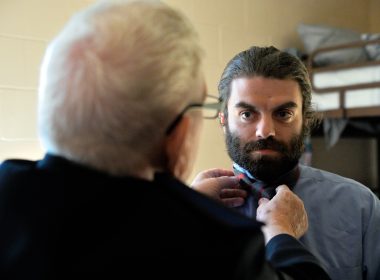by Captain Terry Camsey –
We are about to embark on a very exciting journey, via a campaign that as yet has no name, to again discover God’s will for the Western Territory. This time, instead of considering the time frame from 1990 to the 21st century (MISSION2000), we are looking beyond and well into the new millennium, so…
What’s new? Well, for a start, our world–the environments within we function and reach out– have changed.
The Salvation Army in this territory has changed. Both the survey (conducted by a consultant retained by the territory) and statistical record attest to that. We have made significant progress, regardless of whether we surpass all of the goals set. We have ventured boldly, into “land” that no Salvationists have ever before trodden. Not since the first 30 years or so of the establishment of any territory has so much effort been put, for example, into establishing new units…small groups, outposts, corps…in both existing corps and as separate plant-
ings. Experi-ments have been allowed, risks taken, lessons gleaned, and the territory has grown tremendously in its understanding of change and its process.
The world we strive to reach has changed drastically as well. Immigra-tion has changed the shape of whole communities, demanding that we become more culturally sensitive. Generational changes have taken place…the teenager of today, for example, is not the teenager of past years. We cannot say, “When I was your age…” because we never were their age in their generation! So, learning has taken place in our understanding of the external environment in which we exercise our mission.
One thing is certain; we need to understand the perceptions the unsaved have regarding the Army. Internal surveys will not produce that kind of data. Without it, it will be easy to develop solutions to problems that may not exist, or to respond to symptoms instead of root causes. Good farmers know their land and the crops it is capable of bearing.
|
CSM Jim Horgen, Salem Citadel, Ore.— |
Learning is the key
I read the following quotation in a recent edition of “Bits and Pieces”…
“In times of change, it is the learners who inherit the future.
Those who have finished learning find themselves equipped
To live in a world that no longer exists.”
We learn not just by reading, or planning on paper. We learn by doing since, when all the research is done, it remains theoretical until tried. We know that methods do not work. People work using appropriate methods. We learn from our risks and mistakes. It’s always been so… ask Thomas Edison, who tried several thousand times to get the electric light bulb right. If he’d stopped because of failure, his effort wouldn’t have been worth a candle!
People don’t have to lose what they love
One of the biggest lessons learned has to do with the difficulty of changing what many are comfortable and happy with. Developing blended worship, for example, is more difficult than it appears. I feel that I have earned the right, when I retire, to worship in the way that is comfortable to me. I do not feel, however, that I should push my biases on to others (whether of a different generation or culture) who do not resonate in the same way.
The International Conference of Leaders has affirmed support, “in matters of mission,” for exploration of changes that have the capability of saving people.
The Corps Standard has, for as long as I can remember, stated something to the effect “nothing in this document shall inhibit inspired and adventurous experiments!” The world is catching up with the West!
There are costs involved in change!
One of those, for instance, may involve the management style of the Army. Certainly the management style of any new organization differs from that required when it is established and running well. In the early days, the founder has to “sell” ideas, generate excitement/commitment, take substantial risks to find out what works. We see this in Booth’s early Army–methods were not prescribed, but results were mandated. Later, as Booth hit on a formula that worked, rules, regulations, policies and organizational charts became necessary to insure continued success. The history books tell the story.
What goes around, comes around and–if new initiatives are needed to keep us effective–we shall find ourselves requiring different styles of management depending on whether we are dealing with new or existing initiatives. That is why the present “envisioning process” plans need to include exploration of the way corps need to be run (for effectiveness, in terms of “fruit” sought as well as efficiency). Also, exploration of visions for divisional headquarters as well as for divisions, for territorial headquarters as well as for the territory.
|
Tom Taylor, CSM, Leeward Corps, Hawaii — |
The metaphor makes a difference!
The danger will lie in doing what we want to do, rather than what we may need to do to accomplish God’s will. We need to choose the right metaphor carefully. Are we a “preservation society,” a “search and rescue team,” or something else?
The process we embark upon gives tremendous involvement possibilities to the “grass roots” level, both in shaping territorial vision and that of divisions/commands and corps.
So, choose your metaphors carefully; because what you pursue you will likely become!











